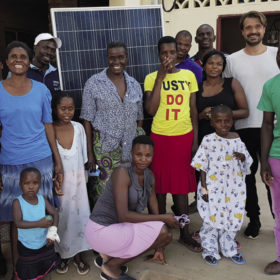 Blockchain to the Maxx for social investment in solar
Blockchain to the Maxx for social investment in solar
Maxx | Blockchain Hub
Building trust, enabling ongoing O&M, and increasing transparency could allow more charity donors and social investors to fund PV systems in developing economies. Maxx | Blockchain Hub believes that the deployment of blockchain technology can achieve this. It has already begun setting up its technology for the funding of rooftop systems.
Maxx | Blockchain Hub provides a system through which social impact investors, charities, and NGOs can contribute toward rooftop PV systems, and then monitor the power production of the arrays after they’ve been installed — all in a way that builds trust through blockchain’s inherent imperviousness from outside interference. The PV systems are provided on a leased basis, with blockchain accounting for payments, and an additional revolving fund created for ongoing operations and maintenance. The developers believe that the systems can be scaled to larger PV arrays and multiple rooftop systems.
To date, two arrays have been developed in Zimbabwe using the Maxx | Blockchain Hub system: a 14.3 kW system at Karanda Mission Hospital and a 3.2 kW project at an office owned by solar training provider Sunergy.
The Maxx | Blockchain Hub system utilizes Raspberry Pi smart meters for monitoring, and the platform developed by Stromdao on the Ethereum blockchain generates the smart contracts. Proponents believe that by providing transparency and building trust, difficult PV markets can be “suddenly” opened up to investors looking to have an impact.
Take active monitoring off your hands
Solar-Log WEB-4U
The growing fleet of PV installed throughout the world requires new solutions for timely and efficient O&M. False alarms and callouts, the bane of any O&M provider, can be expensive and delays in dealing with underperformance can be costly. Solar-Log is attempting to meet these needs with its new WEB-4U services, which takes monitoring off the hands of its customers.
The Solar-Log WEB-4U service is available to existing Solar-Log WEB Enerest clients and new customers, providing remote array monitoring by Solar-Log professionals to actively monitor plant performance.
Solar-Log says that WEB-4U is ideal for smaller installers who are looking to add O&M services to their portfolio, without incurring the cost of active monitoring. It is also well suited to larger installers with a growing C&I and residential rooftop fleet.
By taking the chore of active monitoring off the hands of field technicians, Solar-Log says they can focus on their core business, which is designing and constructing new solar arrays.
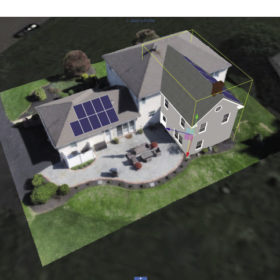 Sky’s the limit with drone-based surveying
Sky’s the limit with drone-based surveying
Scanifly web-based 3D modeling software
Scanifly‘s software platform uses drone imagery and 3D modeling to accelerate project development. The U.S.-based company estimates that it can save an average of $1000 per residential project, and $5000 per commercial project.
Developers can fly a drone over a project site and take pictures as it goes. Scanifly’s software stitches these together to create a 3D model of the site, and allows developers to measure roof planes, simulate shading, and estimate energy production.
The company says its platform is a major improvement on current approaches to design, which often require a time-consuming process of drawing up project sites from scratch, or relying on satellite imagery, which can be highly inaccurate.
Residential batteries to take on grid services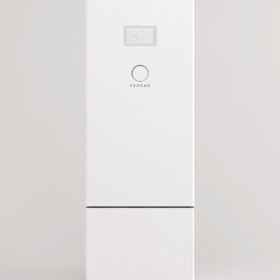
Sonnen Virtual Battery
Thousands of individual sonnen home energy storage systems have been installed across the German power grid and are now supporting the kind of primary power-balancing services that have historically been reserved for large power plants. Sonnen’s virtual battery allows its network of residential storage systems to arrange themselves independently and aggregate power within 30 seconds of grid fluctuations. In discharge capacity blocks starting at 1 MW, the batteries will release energy to serve the grid as needed.
Each sonnen battery sold today is automatically integrated into the virtual power plant, and transmission system operators buy the balancing energy from sonnen on short notice. Homeowners who provide their storage systems for network services are able to receive free electricity in return. The virtual battery obtained pre-qualification from German system operator Tennet in late 2018, with just 27 certified providers for primary power balancing in the country. Sonnen is currently the only provider to use decentralized residential systems to support a national transmission network. The virtual battery platform could be a preview of prosumer power grids of the future.
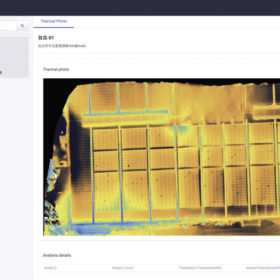 Keeping technicians in the right place at the right time
Keeping technicians in the right place at the right time
Thingnario Photon AI-powered monitoring platform
Taiwan-based Thingnario’s software can identify faults and send notifications telling operators where to go and what to fix, with priority notifications for issues with potential to lose output, or assign tasks that could potentially boost efficiency.
The tool uses satellite images and AI to create a “virtual pyranometer,” which the company says can predict irradiance at any location. The company claims integrating its software will lead to yield improvements of 3-7%, and a 20% gain in human resource efficiency.
Plug-and-play goes C&I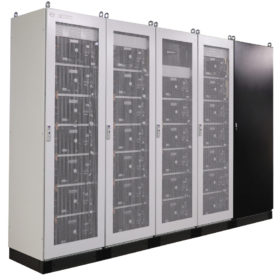
BYD Battery-Box Commercial
in response to growing demand for storage projects in the C&I space, the BYD Battery-Box Commercial storage product comes equipped with pre-assembled components to support quick and easy installations.
The lithium iron phosphate (LFP) battery is available in three capacities: 57 kWh, 154 kWh and 233 kWh, all operating at 770 V. The large turnkey batteries are sold with an 88 kW Refu inverter and an energy management system. Designed for peak shaving, the battery unit has a 1C discharge rate.
With an emphasis on ease of installation, the prepackaged product is the latest additon to the company’s Battery-Box family, adapted from residential use for commercial applications. The use cases for BYD’s Battery-Box Commercial are varied, but the company says it has been primarily designed to serve the industrial market for peak shaving, self-consumption, EV charging, and frequency regulation. According to BYD, the target payback period for the plug-and-play battery energy system is three to five years.
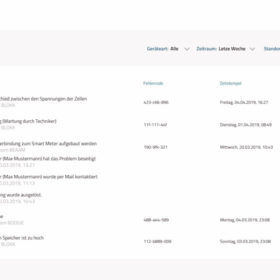 All-encompassing optimization
All-encompassing optimization
W & Kreisel Ntuity
Optimizing consumption and smoothing the intermittency inherent to solar are key concerns for PV system owners. Austrian company W & Kreisel’s Ntuity has a platform which aims to solve this.
The company says the software can manage basic features such as peak shaving or self-consumption optimization, even without an Internet connection, and is ready for integration into larger virtual power plants or community energy sharing schemes.
The system can gather information including weather reports, calendars, traffic, and events and combine them automatically. For example, W & Kreisel says that when Ntuity knows a resident will be on holiday, it can fully discharge their battery the day before to ensure that PV output is fed into the grid for the following days. The platform is based on artificial intelligence, according to the creators, and can continually “learn” to understand the needs of individual users.
A transformer like fish in the water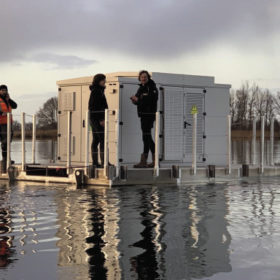
BayWa r.e. Floating transformer station
While modules and inverters have already been installed on water for some years, transformer stations thus far have not joined the pool party. According to developer BayWa r.e., this has been to the detriment of costs, as cabling has had to be run onshore.
BayWa r.e. has now developed a floating transformer station. The company says its 6.5 ton floater for 20kVA systems is the world’s first floating transformer station with IEC certification (IEC 62271-202:2014-03 20 kV, 20 kA 1s). The transformer station is an aluminum raft onto which the transformer, medium-voltage, and low-voltage switchgears are mounted.
Reportedly, the proximity of the transformer to the inverters and modules also makes it easier to adopt a modular design for floating PV systems. BayWa says the system features water ingress detectors, which automatically switch off the entire system if any problems arise. The renewable energy developer asserts that bringing the transformer onto the water can sharply reduce costs for cables. As the hull of the floater is in direct contact with the water, BayWa claims that cooling effects for the transformer and the cables can increase the performance ratio, as well.
This content is protected by copyright and may not be reused. If you want to cooperate with us and would like to reuse some of our content, please contact: editors@pv-magazine.com.
